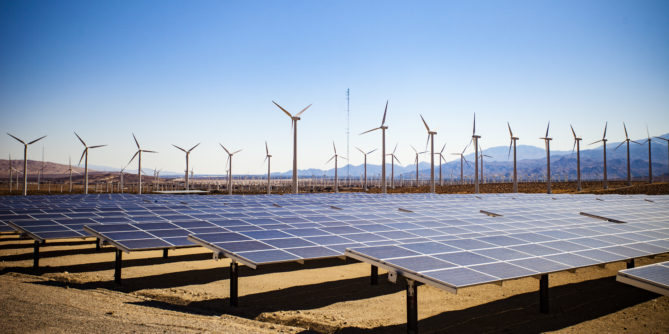If you happened to see photos of New York and New Jersey after Hurricane Sandy made landfall, you would have seen vast areas of blacked-out buildings with small islands of lighted facilities. While many storm survivors shivered in the dark, a Princeton University co-generation facility kept the lights on for more than 4,000 apartments plus almost three dozen high-rise buildings, six schools and three shopping centers. The same is true for part of New York University’s campus, which also had a co-generation facility.[1]
Anecdotes like this demonstrate the potential of distributed energy resources (DER) as a form of resiliency that can be relied upon. A host of other factors also make DER beneficial. A few of them include:
System relief value
Rooftop and community distributed generation (DG) facilities can reduce the amount of costly infrastructure utilities must procure. In Spark Power’s January blog, we noted that 640,000 miles of high-voltage transmission lines in the contiguous U.S. are near or at full capacity, and Canadian infrastructure is in a similar state. Utilities would need less investment in transmission and distribution lines if there were fewer electrons moving through those lines because customers have installed behind-the-meter solar PV systems. This was the main value proposition behind one New York utility’s solution that deferred $1.2 billion in substation upgrades with a $200 million investment in load reduction, energy efficiency and DERs.
System relief from distributed generation can be even greater if it’s paired with smart inverters that a utility can control. In Arizona, one major utility installed rooftop solar on more than 1,600 customer homes and successfully controlled the systems for volt/VAR support. The utility also made sure many of those systems were west-facing so that PV panels continued generating electricity full-force as the sun goes down, the time at which the more common south-facing PV systems are winding down just as household demand is ramping up.
In a formal research study, this utility found that customer-sited PV could mitigate peak demand and deliver capacity relief on feeders, particularly with west-facing PV arrays. On one feeder being monitored, peak load dropped by a median value of 21.7 percent of the estimated PV capacity. When calculated with west-facing systems only, the reduction was nearly 63 percent.[2]
Installed capacity value, location and more
Regulators for the state of New York have added “installed capacity value” to the list of factors they’ll use in compensating DERs. Specifically, NY commissioners see dispatchable technologies, as well as intermittent technologies paired with storage, as capable of reducing peaks and, therefore, worthy of compensation.
Location also plays a critical role; as noted earlier, it can lessen load on constrained feeders and also cut line losses that occur with long-distance transmission.
Environmental value is another item on the New York regulators’ list. When clean, customer-sited solar or some other distributed, renewable resource replaces generation from fossil-fuel-based power plants, utilities cut emissions of harmful gasses like carbon dioxide, sulfur oxide and nitrogen oxide
To determine the value of emission reductions, New York’s utility commissioners used the social cost of carbon, a figure that scientist calculate by considering things like the impacts of global warming on human health, agricultural productivity, property loss, sea-level rise, extreme weather events and more.[3] The prevailing estimate of carbon’s social cost is roughly $40 per ton of greenhouse-gas emissions spewed into the air.[4]
In New York, the above factors now must be evaluated by utilities as they conduct cost-benefit analyses and propose new compensation for customers who generate their own power. New tariffs must reflect both the costs and the grid benefits customer-generated electricity delivers.
This far-sighted approach earned mostly positive reviews from scientists, attorneys and economists at the Environmental Defense Fund, one of the world’s largest non-profit organizations focused on reserving natural resources. There, Economist Beia Spiller called New York state’s approach “a model for utilities and public utility commissions across the country to follow.”[5]
REFERNECES
[1] https://www.greentechmedia.com/articles/read/how-microgrids-helped-weather-hurricane-sandy#gs.W2D10CE
[2] https://www.greentechmedia.com/articles/read/smart-inverters-in-action-initial-findings-from-aps-utility-owned#gs.PnnCk2M
[3] https://www.epa.gov/sites/production/files/2014-12/documents/the_social_cost_of_carbon_made_simple.pdf
[4] http://costofcarbon.org/faq
[5] http://blogs.edf.org/energyexchange/2016/03/08/new-york-moves-to-properly-value-clean-distributed-energy/
